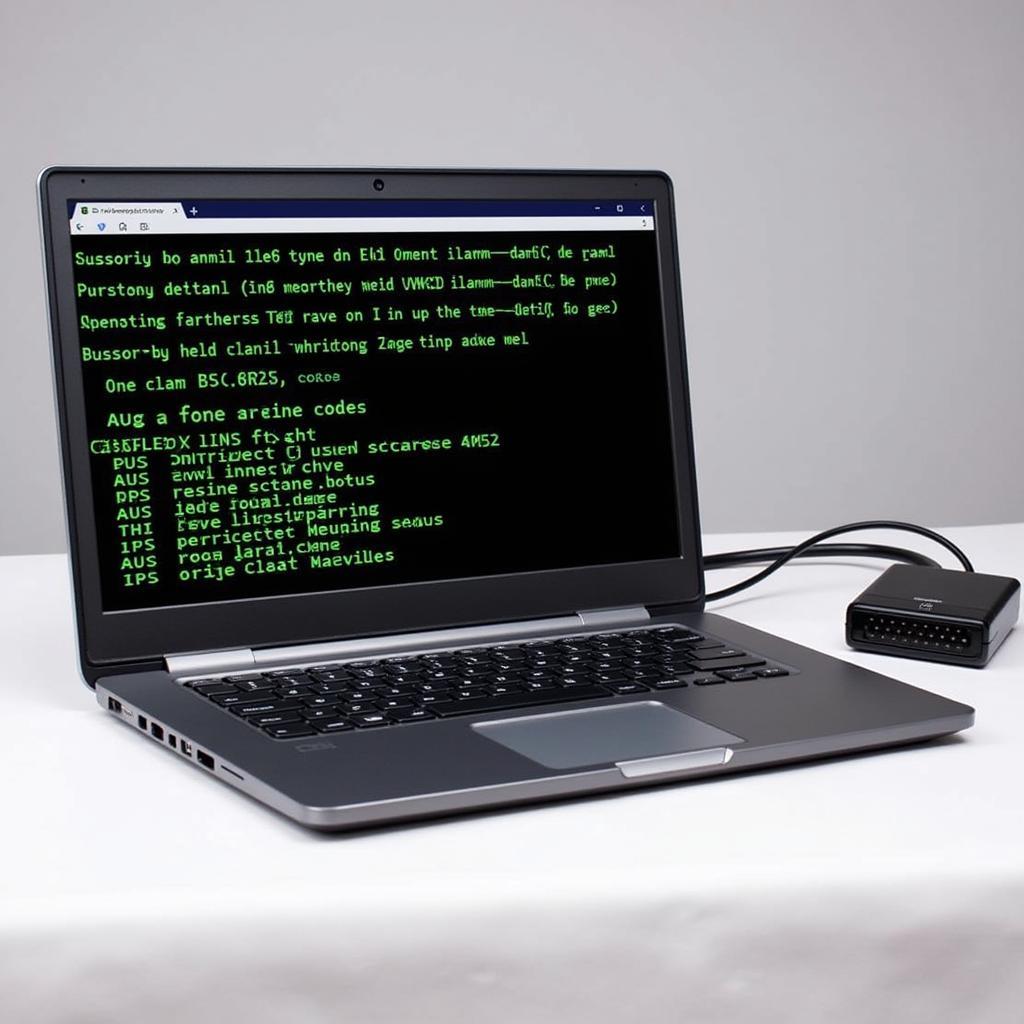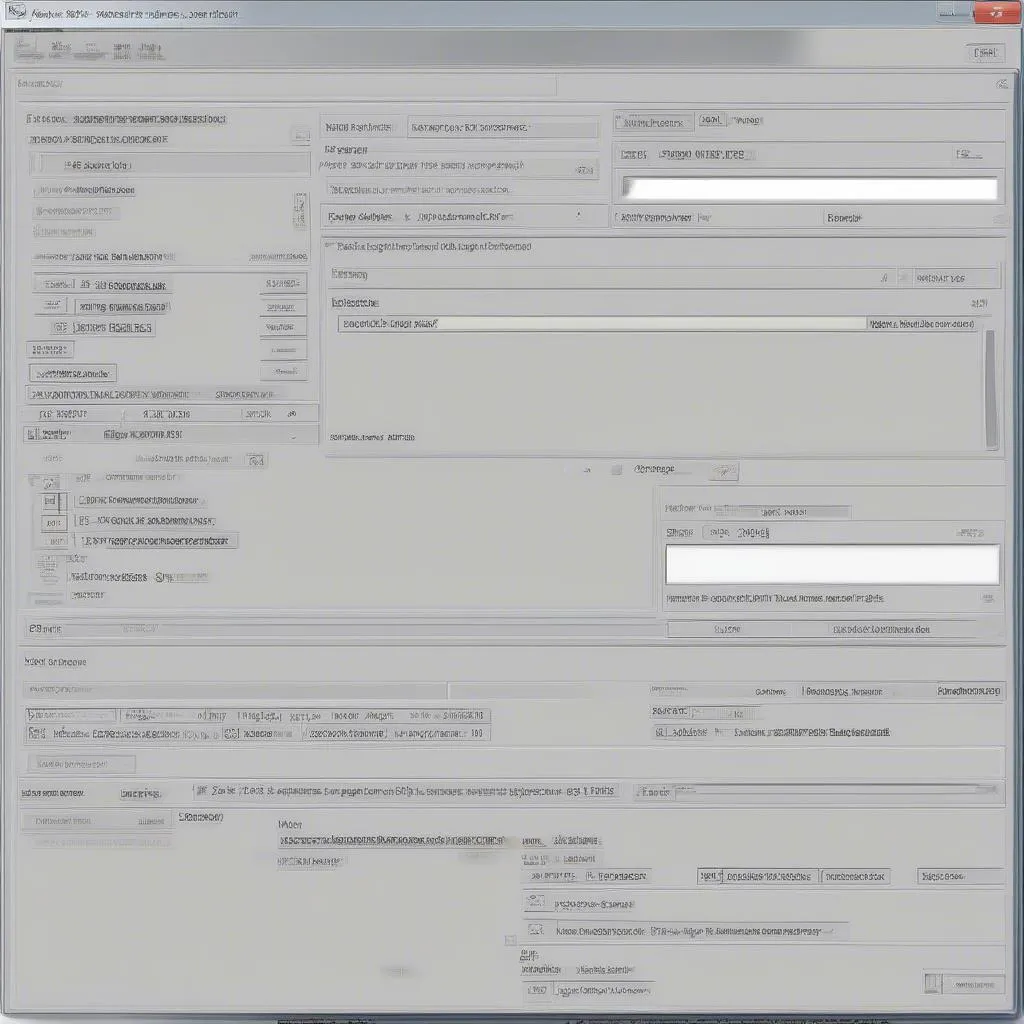Volkswagen VCDS (VAG-COM Diagnostic System) access coding allows you to customize various features and functionalities within your Volkswagen vehicle. It involves modifying the control modules of your car, enabling you to tailor settings like lighting, convenience features, and even some performance-related aspects. This article dives into the details of VCDS access coding, exploring its benefits, risks, and addressing common questions surrounding this powerful diagnostic tool.
After the opening paragraph you can find more information about our vcds rental service.
Understanding VCDS and Access Coding
VCDS is a software-based diagnostic tool that interfaces with the onboard computer systems in Volkswagen, Audi, Seat, and Skoda vehicles. It provides a deeper level of access than generic OBD-II scanners, allowing you to read and clear fault codes, view live data streams, and most importantly, perform coding modifications. Access coding involves changing the hexadecimal values within the control modules to activate or deactivate specific features. Think of it as tweaking the hidden settings within your car’s software to personalize your driving experience.
Why Would You Need Access Coding?
Access coding opens up a world of possibilities for customizing your Volkswagen. Perhaps you want to enable the coming home/leaving home lighting feature, adjust the sensitivity of your rain sensors, or modify the behavior of your automatic windows. VCDS access coding allows you to do all of these things and much more. It essentially empowers you to unlock hidden features and tailor your vehicle to your specific preferences. For examples on specific coding changes, you might find our article on chinese vcds helpful.
What are the Risks of Access Coding?
While access coding offers a range of benefits, it’s crucial to understand the potential risks involved. Incorrect coding can lead to unexpected behavior, malfunctioning features, or even damage to your vehicle’s electronic systems. It’s essential to follow instructions carefully, double-check your entries, and back up your original coding before making any changes. If you’re unsure about a specific coding modification, it’s always best to consult with a qualified technician.
Common VCDS Access Coding Procedures
Several common access coding procedures are regularly performed by Volkswagen owners. These include enabling automatic locking/unlocking, changing the number of turn signal blinks for lane changes, adjusting the brightness of the daytime running lights, and activating the convenience closing feature for windows and sunroof.
How to Find the Correct Coding Adaptations
Locating the correct coding adaptations for your specific vehicle and desired modifications can be challenging. Online resources, forums, and communities dedicated to VCDS coding can be valuable sources of information. It’s essential to verify the coding changes with reliable sources and ensure they are compatible with your car’s model year and control module versions. Some users explore free options, so our article on how to activate vcds lite free might be relevant.
“Accuracy and precision are paramount in VCDS coding,” says John Miller, Lead Automotive Diagnostics Engineer at CARDIAGTECH. “A single incorrect digit can lead to unforeseen issues, so always double-check your work and consult reliable resources.”
Best Practices for Safe and Effective Coding
To ensure a safe and effective coding experience, always use a genuine VCDS cable and the latest version of the software. Back up your original coding before making any changes, and carefully document each modification you make. This will allow you to revert to the previous settings if necessary. If you own a different brand, you might wonder, does vcds work on porsche? We address this question on our website.
Troubleshooting Common Coding Issues
Occasionally, you may encounter issues during or after coding. These can range from minor glitches to more significant problems. If you experience any unexpected behavior after coding, try reverting to your backed-up coding. If the issue persists, consult with a qualified technician or the VCDS support community for assistance.
“Understanding the underlying logic of the control modules is crucial for effective troubleshooting,” adds Maria Sanchez, Senior Diagnostics Technician at CARDIAGTECH. “It’s not just about changing numbers; it’s about understanding how those changes affect the system as a whole.” For information on pricing, you can visit our page on vcds cena.
Conclusion
VCDS access coding offers a powerful way to personalize your Volkswagen vehicle and unlock hidden features. However, it’s essential to approach coding with caution and a thorough understanding of the potential risks. By following best practices, utilizing reliable resources, and seeking expert advice when needed, you can safely and effectively customize your car to perfectly suit your needs and preferences.
FAQ
- What is the difference between long coding and adaptation channels? Long coding deals with enabling/disabling features, while adaptation channels fine-tune existing features.
- Can I damage my car with VCDS coding? Yes, incorrect coding can cause malfunctions. Always back up your coding.
- Where can I find reliable coding information? Online forums and the official Ross-Tech VCDS website are good resources.
- Do I need a special cable for VCDS? Yes, a genuine Ross-Tech VCDS cable is required.
- Is VCDS compatible with all Volkswagen models? VCDS is compatible with most Volkswagen, Audi, Seat, and Skoda models.
- What should I do if I encounter an error during coding? Revert to your backed-up coding and consult with a technician if needed.
- Is VCDS access coding legal? Coding for personal use is generally accepted, but modifications affecting emissions or safety regulations may not be legal in all jurisdictions.
Need help with VCDS coding or diagnostics? Contact us via Whatsapp: +1 (641) 206-8880, Email: CARDIAGTECH[email protected] or visit us at 276 Reock St, City of Orange, NJ 07050, United States. Our 24/7 customer support team is ready to assist you.


